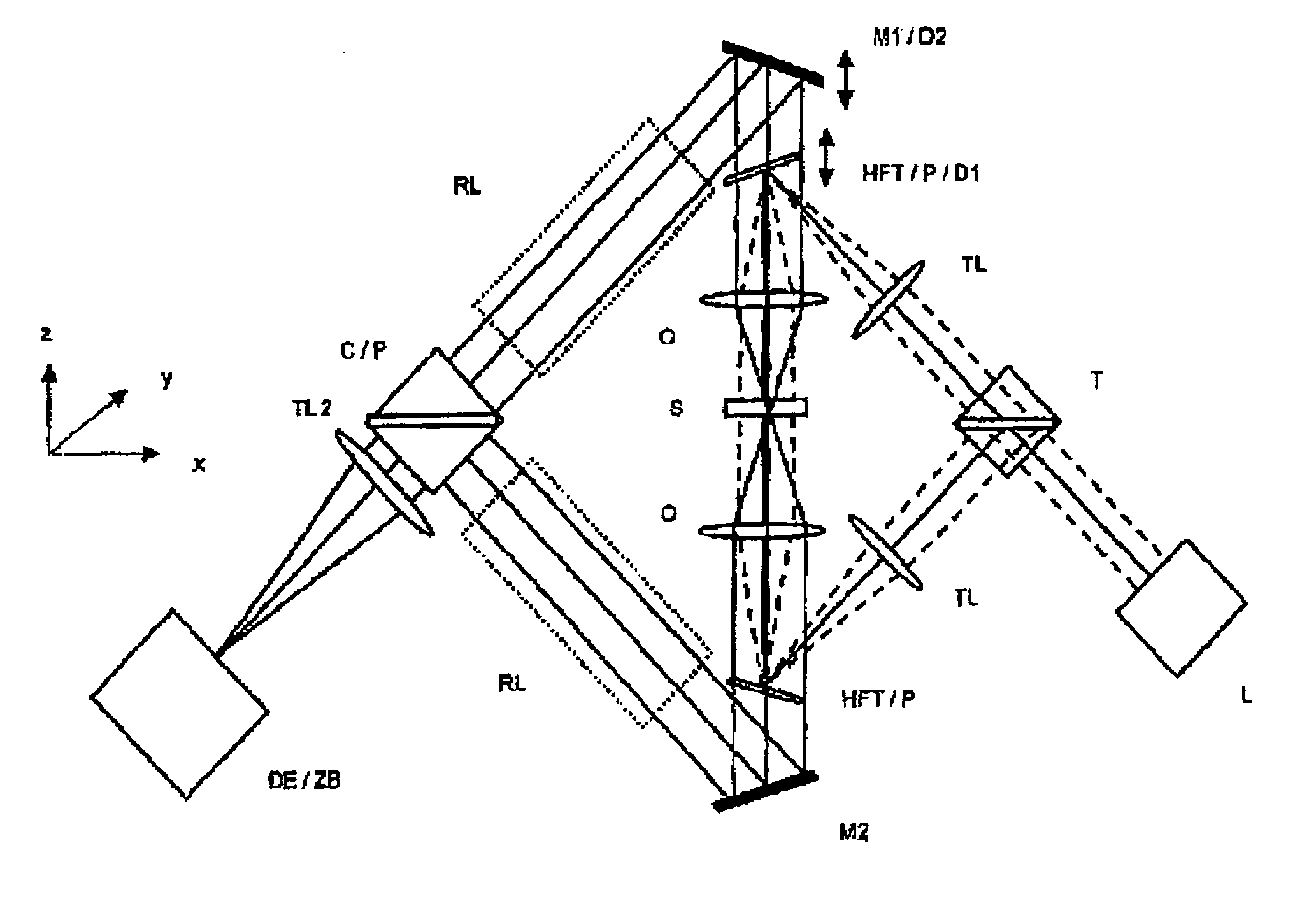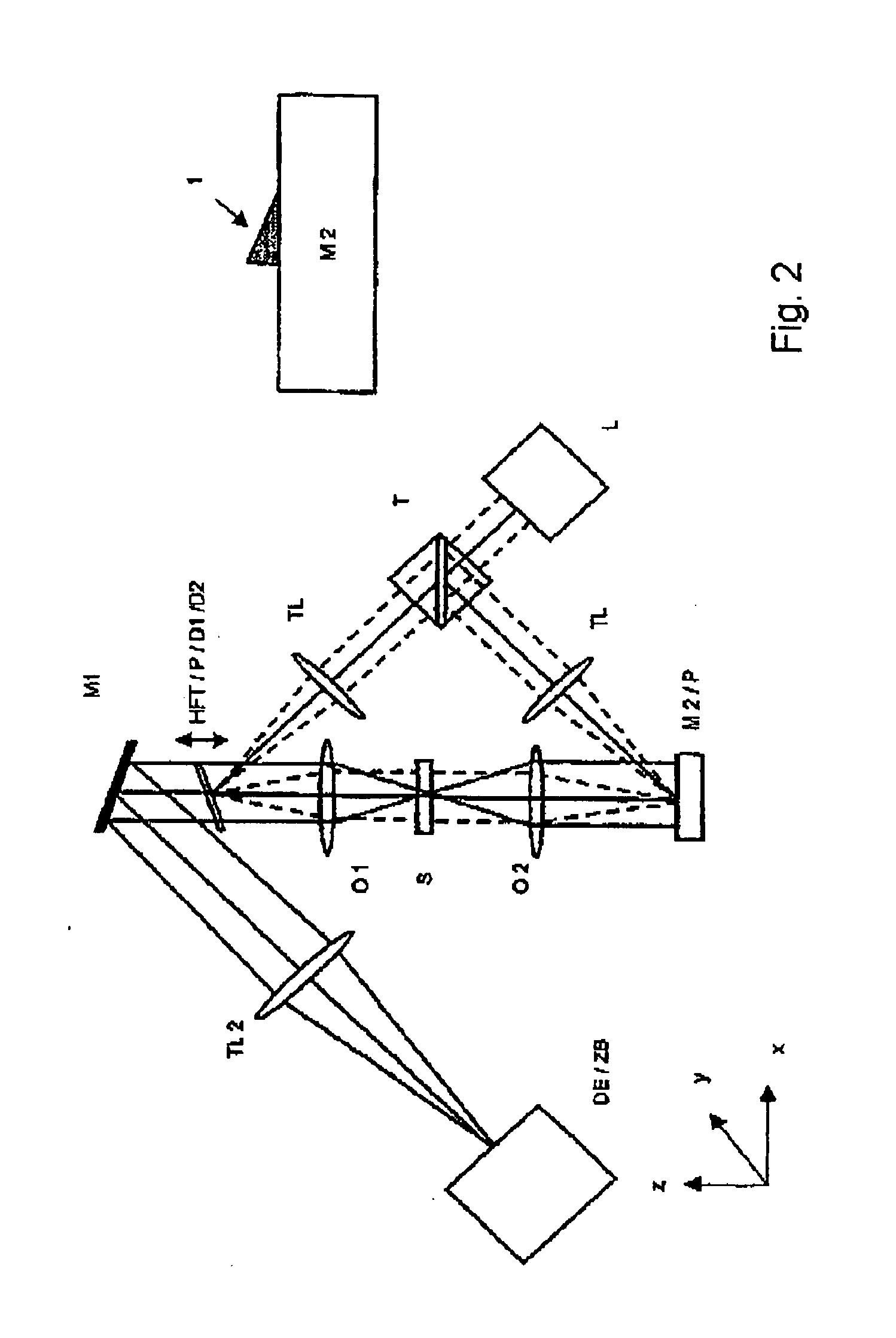Arrangement for the optical detection of light radiation which is excited and/or backscattered in a specimen with a double-objective arrangement
a double-objective arrangement and optical detection technology, applied in the field of microscopy, can solve the problems of reducing the signal-to-noise ratio, unable to use spatial filtering (“confocality”), and unable to increase the lateral resolution, so as to reduce the sensitivity of detection, increase the noise of the detector, and increase the effect of amplification
- Summary
- Abstract
- Description
- Claims
- Application Information
AI Technical Summary
Benefits of technology
Problems solved by technology
Method used
Image
Examples
Embodiment Construction
The following description will provide further details of various arrangements by which the light radiation (hereinafter, detection light) excited and / or backscattered in the specimen can be separated from the excitation light efficiently and independent from wavelength in double-objective arrangements. The arrangements are accordingly suitable in particular for fast multitracking. In the following context, light radiation which is excited in the specimen is light which is radiated from the specimen in an undirected manner, preferably in a large solid angle, particularly fluorescent and luminescent light excited in the specimen.
1. Widefield Illumination and Observation with a Double-Objective Arrangement
The arrangement according to the invention for a widefield microscope with double-objective arrangement is shown schematically in FIG. 1. In a widefield microscope, the specimen is homogeneously illuminated simultaneously in a plurality of points on the specimen in the field und...
PUM
| Property | Measurement | Unit |
|---|---|---|
| edge length | aaaaa | aaaaa |
| luminescent | aaaaa | aaaaa |
| phosphorescent | aaaaa | aaaaa |
Abstract
Description
Claims
Application Information
 Login to View More
Login to View More - R&D
- Intellectual Property
- Life Sciences
- Materials
- Tech Scout
- Unparalleled Data Quality
- Higher Quality Content
- 60% Fewer Hallucinations
Browse by: Latest US Patents, China's latest patents, Technical Efficacy Thesaurus, Application Domain, Technology Topic, Popular Technical Reports.
© 2025 PatSnap. All rights reserved.Legal|Privacy policy|Modern Slavery Act Transparency Statement|Sitemap|About US| Contact US: help@patsnap.com



